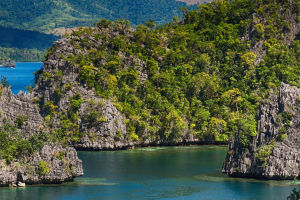Antarctica is one of the coldest regions on Earth and the largest storage area for glaciers in the world. Its glaciers are one of the most important sources of water on Earth, and they cover about 98% of the continent.
Antarctica's largest glacier, located at the southern tip of the continent, is also the largest and youngest Antarctic ice sheet in the world. These glaciers are mainly formed by continental precipitation, with most of the glaciers located in the Laplace Island area and South Georgia Island area at the western end of the mainland.
Antarctic glaciers are widely distributed, accounting for more than 50% of the total area of the continent's ice sheet. They are the most affected ice bodies in Antarctica and the largest plate core in the Antarctic Ice Sheet.
Despite their size, icebergs that break off from these glaciers move in the direction of ocean currents. Due to their different volumes and shapes, individual icebergs will have different drift directions and speeds, even in the same sea area.
In the Antarctic coastal current region, the average speed of iceberg drift is about 500 meters per hour. Some icebergs can move faster than sea ice due to their large height, which makes them more susceptible to wind.
Although these icebergs can appear stationary at sea, they are constantly moving and can last for about 10 years before slowly melting due to their large size and the low temperature of the sea surface.
While the large number of icebergs floating in Antarctica is beautiful and spectacular, they pose a significant threat to ships sailing at sea, particularly in foggy or poor visibility weather conditions. Modern research ships and other vessels are equipped with radar devices that can detect icebergs in time, thereby reducing the risk of collision.
Glaciers are important not only as a source of water but also as a reflection of climate change, supporting biodiversity and the planet's ecosystems.
However, human activities have increasingly impacted Antarctica's glaciers in recent years. Global warming has led to higher temperatures in Antarctica, which has increased the loss of ice sheets.
Moreover, human activities and development have also had a certain impact on Antarctica's glaciers. Expedition tourism, scientific research, and resource development in Antarctica have all caused damage to these glaciers.
To protect Antarctica's glacier resources, the international community has taken a number of measures. Laws and regulations such as the United Nations Framework Convention on Climate Change and the Antarctic Treaty have clearly stipulated protection and management measures for Antarctic glaciers.
Research teams around the world are actively exploring scientific research on Antarctica's glaciers to better understand and respond to changes in these important ice bodies. These efforts will help protect Antarctica's glaciers and ensure their continued contribution to the planet's ecosystems and water supply.
As we continue to face the challenges of global warming and climate change, it is crucial that we prioritize the preservation of Antarctica's glaciers and take action to reduce our impact on them.


